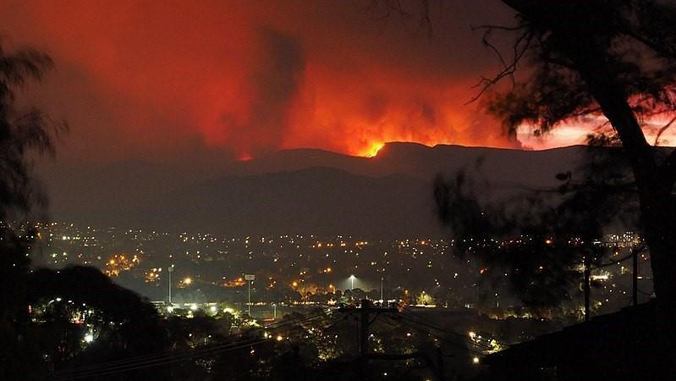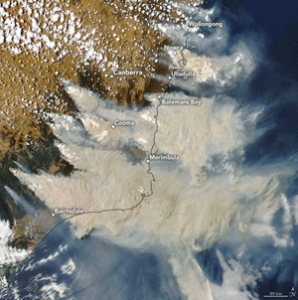
Smoke particles and dust from wildfires interact with clouds and impact weather and climate, affecting how clouds form, where and when it rains, and even how air moves in the atmosphere. Supported by a Mid-Career Advancement (MCA) award from the National Science Foundation, an associate professor at the University of Hawaiʻi at Mānoa School of Ocean and Earth Science and Technology (SOEST), will strive to better understand these interactions.
Jennifer Griswold’s research will aid scientists and policymakers in making decisions to protect community health, improve air quality and prepare for future wildfires.

“I’m most interested in having a better understanding of how the atmosphere, clouds and climate are impacted by the particles emitted by large wildfire events through combining satellite observations, my current expertise, and improving global climate model representations of these types of events, a skill I will learn through this project,” said Griswold, who is also chairperson of Department of Atmospheric Sciences.
The three-year program and $360,000 in funding provide protected research time, resources and the means to gain new skills through synergistic and mutually beneficial partnerships.
The funding covers a full semester of teaching and summer overload for each year, and one month of salary for Griswold’s mentor at the National Center for Atmospheric Research (NCAR), project scientist Christina McCluskey; and cover travel to NCAR for training and collaboration, fees to attend conferences, and purchasing a new node for Department of Atmospheric Sciences’ high-performance computing cluster.
“I’m very fortunate to have not only the funding from the MCA to buy out my teaching but the support of my Department and the SOEST Dean’s office to take a full year off,” said Griswold.
Learning from events across the Pacific
The devastating Lahaina fires in 2023 significantly impacted the surrounding community and environment. This tragic event renewed Griswold’s focus on how particles produced or transported by large wildfire events can impact air quality and clouds near the fires and downwind.
At NCAR, Griswold will learn how to run the Community Earth System Model version 2 and will investigate the impacts of one of the most intense and catastrophic fire seasons on record in Australia, the 2019–20 bushfire season. The associated fires sent a smoke plume all the way to South America and Antarctica and as high as the stratosphere. This large-scale impact means that many points in the climate model will be included in Griswold’s simulation of the event.
For more information, see SOEST’s website.
–By Marcie Grabowski

